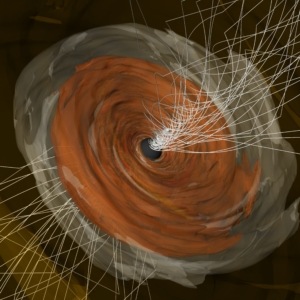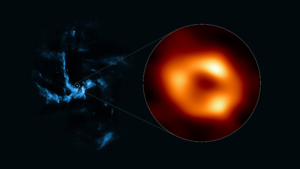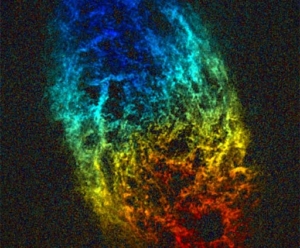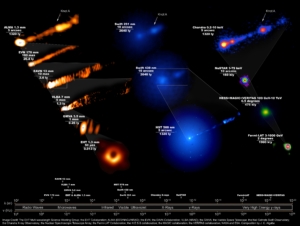Astronomers using the U.S. National Science Foundation’s Very Long Baseline Array (NSF VLBA) and U.S. National Science Foundation’s Very Large Array (NSF VLA) have caught a supermassive black hole in the act of awakening from a long slumber, providing an unprecedented glimpse into the earliest stages of black hole activity.


NASA’s Chandra and the U.S. National Science Foundation Very Large Array See Surprisingly Strong Black Hole Jet at Cosmic “Noon”
Astronomers used Chandra and the U.S. National Science Foundation Karl G. Jansky Very Large Array (NSF VLA) to study this black hole and its jet at a period they call “cosmic noon,” which occurred about three billion years after the universe began.

A Supermassive Black Hole’s Strong Magnetic Fields are Revealed in a New Light
The Event Horizon Telescope (EHT) collaboration has published new results that describe for the first time how light from the edge of the supermassive black hole M87* spirals as it escapes the black hole’s intense gravity, a signature known as circular polarization.

Milky Way’s Black Hole Was “Birth Cry” of Radio Astronomy
The new image of the black hole at the center of our Milky Way galaxy made with the Event Horizon Telescope brings radio astronomy back to its celestial birthplace. The EHT image provides the closest look yet at the region from which radio waves from beyond the Earth were first detected in 1932 — by Karl Jansky, the father of radio astronomy.

Invisible Colors: Why Astronomers Use Different Radio Bands
Radio light is invisible to our eyes, so it’s easy to think of all radio light as the same. But radio is filled with colors, just as the colors of visible light we can see, and radio astronomy is at its most powerful when we use all the colors of its rainbow.

VIDEO: Multi-wavelength Observations Reveal Impact of Black Hole on M87 Galaxy
New multi-wavelength observations mounted by the Event Horizon Telescope (EHT) collaboration across the entire electromagnetic spectrum have provided new insight into the impact of the black hole at the core of galaxy M87 on its immediate, and not so immediate, surroundings.





